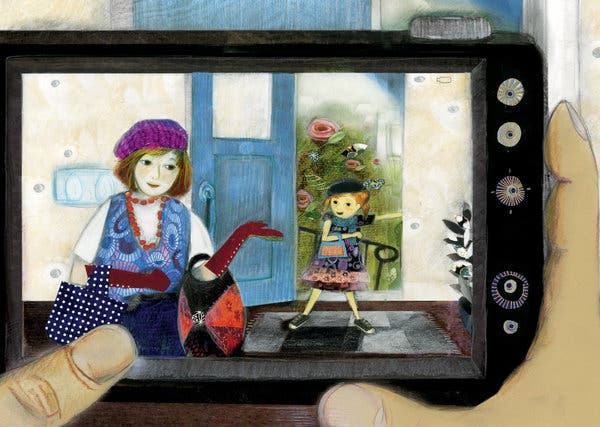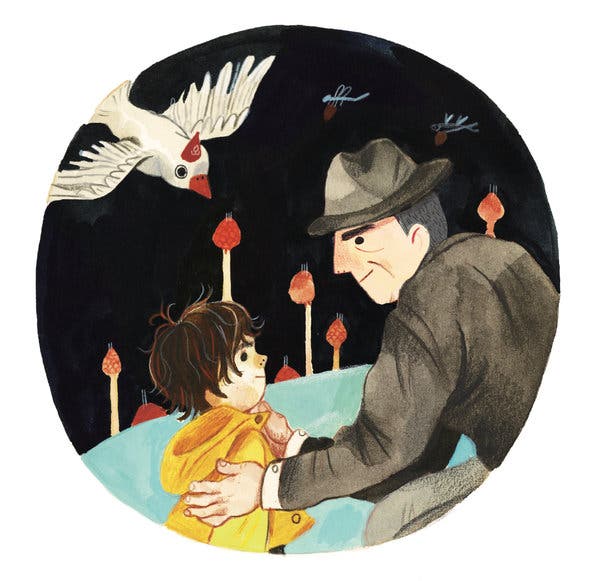Most tender is the protective way the boy watches his grandfather sleep, sensing the man’s own frail mortality. “If a fly comes stepping with its sticky feet across Grandpa’s bald forehead — whoosh — I will blow it away. If an ant comes crawling from his shoes up his pants leg I will gently brush it.” Here, the loss of a loved one is no grand event, but a fine, gleaming thread in the fabric of everyday life.
Monica Kulling and Irene Luxbacher’s AUNT PEARL (Groundwood, 32 pp., $18.99; ages 4 to 8) takes a similar approach with the tale of an older homeless relative who finds temporary shelter inside a child’s suburban home. Aunt Pearl wears a raspberry beret covered in buttons with sayings like “Normal People Scare Me,” and roots through the neighborhood garbage, finding treasure in what has been tossed away. Luxbacher’s artwork conjures a child’s point of view, with its textured overgrown gardens and mountains of junk on the verge of a landslide.

While Aunt Pearl is a source of stress for Mom, the children accept her strangeness. When she grows listless, talking to herself, then does not appear at breakfast one morning, they all feel the loss. The children agree to keep “remembering her on garbage days.”
A grandfather draws the life cycle of a jellyfish in Sang Miao’s THE IMMORTAL JELLYFISH (Flying Eye, 40 pp., $17.95; ages 5 and up), explaining to his grandson that the creature, just as it is about to die, gives birth to itself again, living forever. This exchange proves to be the last time they are together.

The boy is told that his grandfather is dead. He is devastated. Then one night, he is reunited with his grandfather in a dream. They set off on a fantastical journey, with Miao’s art bubbling and churning with boisterous plants rising into forests and caves morphing into cities. The boy is shown the Life Transfer City, a limbo where all people and creatures who were once alive are allowed to return to earth as an animal or object of their choosing, including a lion who had been caged and “chose to become a cloud, so he could drift freely through the world.” The boy finds comfort in the understanding that, like the jellyfish, so will his grandfather live forever.
As these four books illustrate and I have come to realize, the conversation about death is alive, shifting and fading, bobbing to the surface and just as swiftly sinking below. It is not one thing for us or for children. When I asked Winter again what she thought about death, there was no memory of my parental wipeout. She simply announced with great confidence: “You don’t need a phone.” She had worked it out just fine.
 EU News Digest Latest News & Updates
EU News Digest Latest News & Updates



